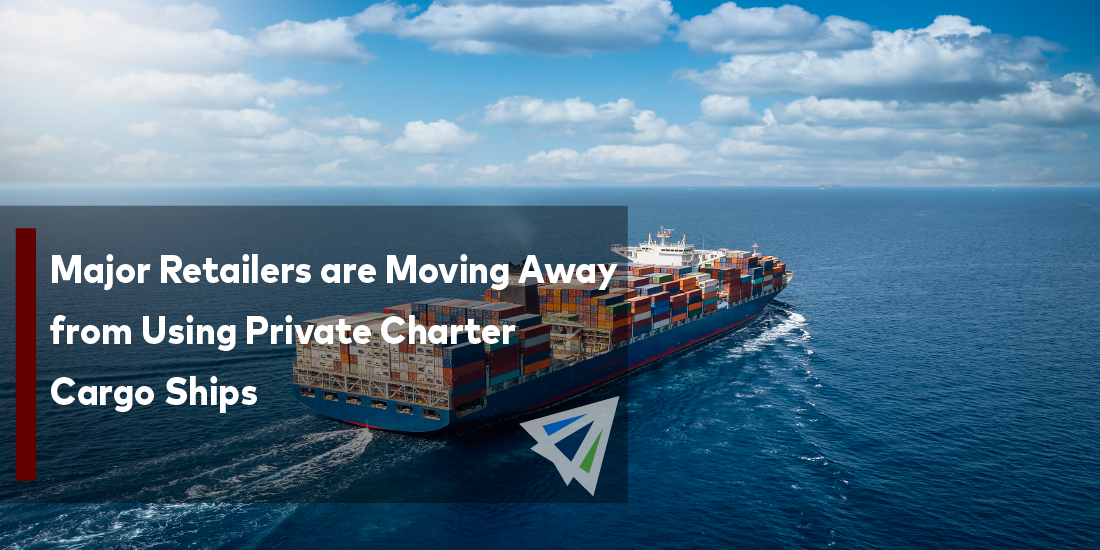The last couple of years have caused disruptions across the ocean shipping industry all triggered by pandemic-related issues. The supply chain was drastically affected by global lockdowns and widespread illness, causing factories and manufacturers to turn up short on deliveries alongside struggling ports attempting to move cargo. This caused congestion to rise, product availability to drop, and ocean rates to skyrocket – effectively creating an incredibly expensive and uncertain/volatile shipping market.
As a result of the mayhem, large retailers who could afford it were purchasing chartered ships in an effort to bypass the supply chain disruptions caused by COVID-related factors. But in recent news, experts are seeing a drastic decrease in the use of these private charter cargo ships as the industry appears to be headed in the direction of pre-pandemic stability.
Retailers Drop Private Charter Ships
As congestion at the ports has decreased, global lockdowns have slowed, and port workers are back to work, cargo availability has increased greatly alongside a drop in ocean rates. Costco, Home Depot, and Party City are just a few examples amidst myriad companies who have begun to shut down their private chartered cargo operations in an effort to take advantage of a stabilizing ocean shipping market.
It’s a strange situation to entertain the idea that a chartered ship may be cheaper than ocean spot rates, but in 2021, rates got out of control. After increasing over 10-fold, ocean shipping rates at one point had hit nearly $20,000 to ship a single container from Asia to the West Coast of the U.S. These baffling rate increases amidst the highest shipping demand in history made chartered vessels an affordable alternative. Unfortunately, even these chartered vessels didn’t work out seamlessly.
Party City was one among several others who encountered issues with private chartered vessels. Despite attempts to avoid congestion on regular cargo ships, private chartered vessels often left the port several days late only to sail across the ocean and be met by severe port congestion, forcing them to wait at anchor for days (or in some cases, weeks.) This caused Party City to miss critical delivery dates for holidays like Halloween. While the private chartered vessels were decently fast, it was far from a perfect solution.
Spot rates for ocean shipping have dropped drastically in recent months. In the first week of December, the average cost to ship a container from Asia to the West Coast of the U.S. was roughly $1,500 – down from nearly $15,000 this same time last year.
Launching Personal Shipping Lines
But using cargo ships from large steamship lines isn’t the only solution retailers have reached for. For companies who are big enough, some have even opened their own private vessels to transport their products. This allows them to avoid the unnecessary stops that full container ships make for cargo headed for different destinations, and to instead send their products directly to their destination.
Once again, this effort has helped to a certain degree, but every solution has its problems. Finding and securing berth space is among one of the greatest struggles for those using their own vessels.
In either case, the fact remains – businesses are trying their best to adapt in their shipping processes as the logistics industry changes, and the last year has shown a major change in shipping rates, vessel availability, and route options. Whether retailers are purchasing their own vessels for customized shipping or taking advantage of low spot-rates on ocean containers, there’s no doubt that private chartered vessels are seeing a drastic decrease in activity over the last several months.
